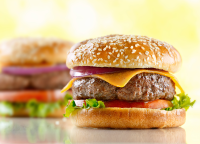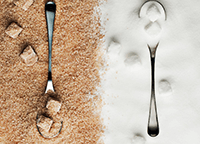Mmmmmm, pasta! Who doesn’t love a piping hot bowl of spaghetti, or a plate full of luscious linguini?
As much as you enjoy pasta’s texture and taste, do you avoid it because you're watching your weight?
Boy, do I have good news for you!
It turns out that there’s a simple trick that can cut pasta’s fattening effect in half. And you don’t have to switch out a single ingredient!
How could that be? Read on.
The Problem with Most Pasta
First, let’s look at why pasta is a problem in the first place.
Most commonly used pasta is a simple carbohydrate, and when you eat this type of carb it's broken down in your system and then absorbed as a sugar.
This spikes your glucose levels. When they fall, you get hungry again.
This is precisely why we turn to complex carbs (the ones you should eat every day) instead – they release glucose into our system more slowly and keep us feeling full longer.
What you probably didn’t know – and few people do – is that you can change the chemical makeup of pasta just by letting it cool down. Once pasta has been cooked and cooled, it changes its structure so that it becomes what is known as “resistant starch”.
Resistant starch is a carb that doesn’t break down in our guts. It resists our stomach acids, passing through undigested.
There are four types of resistant starch:

1. Seeds, whole grains and legumes
2. Corn, raw uncooked potatoes and raw green bananas
3. Starchy foods that have been cooked and cooled
4. Man-made starches (not recommended)
Resistant starches actually help you lose weight because you feel full longer and don’t give you a sugar spike. They also have the advantage of helping good bacteria grow in your gut!
Pasta that has been cooked and allowed to cool falls into the third category of resistant starch.
It acts like insoluble dietary fiber, moving through your digestive system slowly. You'll eat less and feel full longer.
So, How Do You Turn a Hot Pasta Dish into a Resistant Starch?
A science reporter in London ran a test in which he had volunteers eat pasta that was either freshly cooked, cold, or reheated. He took blood samples to see how their glucose levels responded, and found that cold pasta had a smaller spike in blood glucose than fresh hot pasta.
But he also found that when the pasta was reheated, it cut blood glucose in half.
The bottom line is that heating up leftover pasta can now become your diet secret!
In fact, the best way to make pasta is to prepare it the day before you plan to serve it, then reheat it the next night.
TweetOf course, if you really want to give your pasta a healthy boost, opt for one of these 6 seriously healthy types of pasta.
Here’s one of my favorite recipes for a healthy pasta dish for the whole family that's made with reheated pasta!

Yours in health and happiness,
Danette
P.S. Please share this good news with all of your pasta loving friends and I love hearing from you in the comments below. What's your all time favorite pasta dish?






